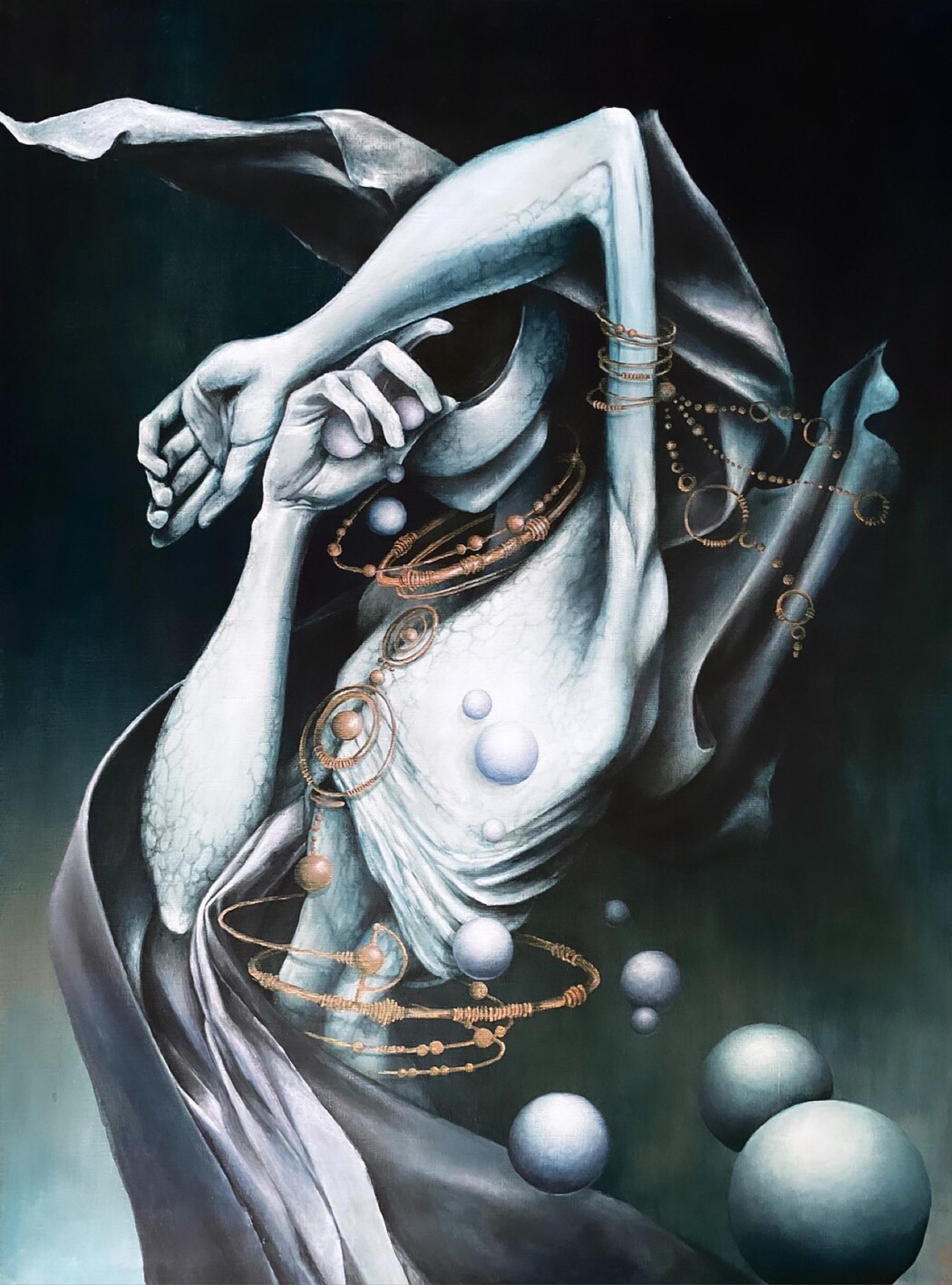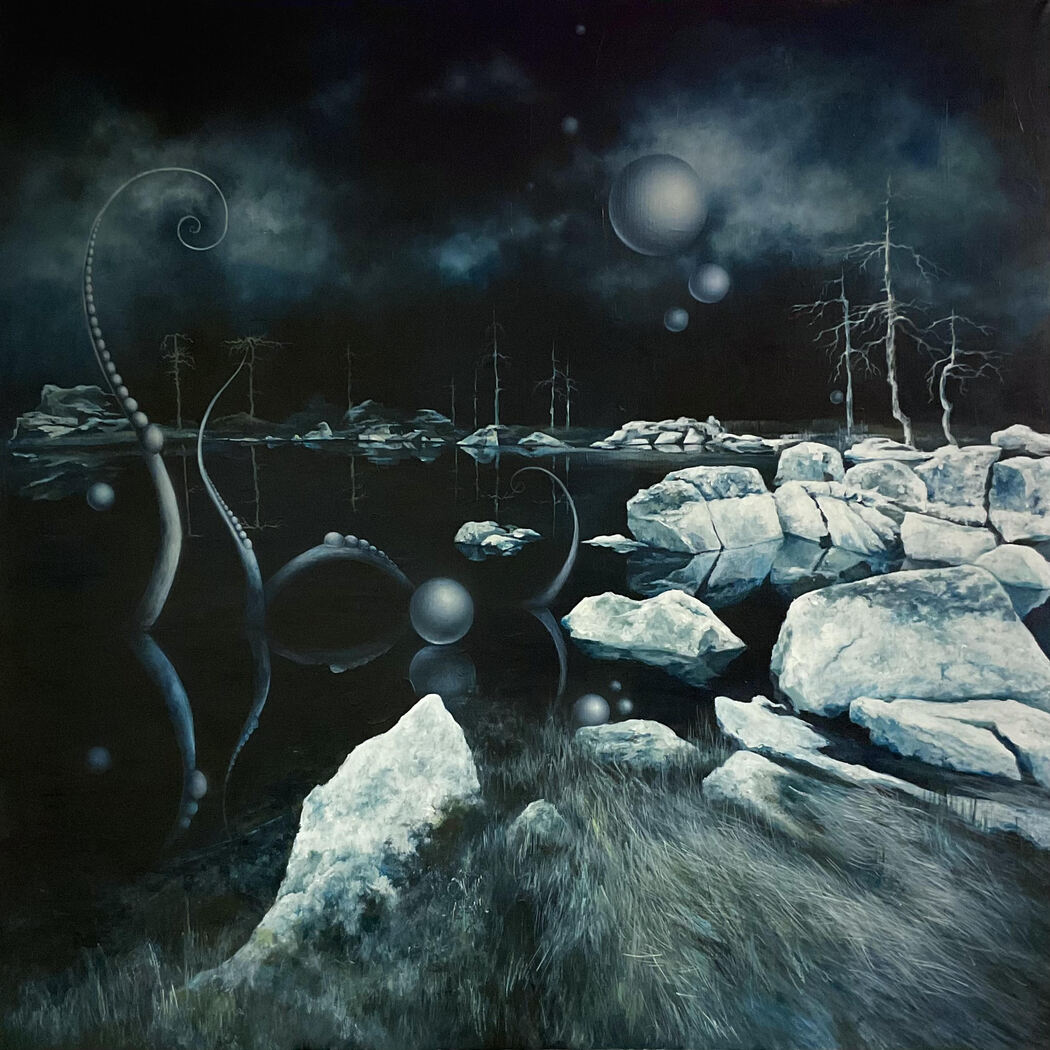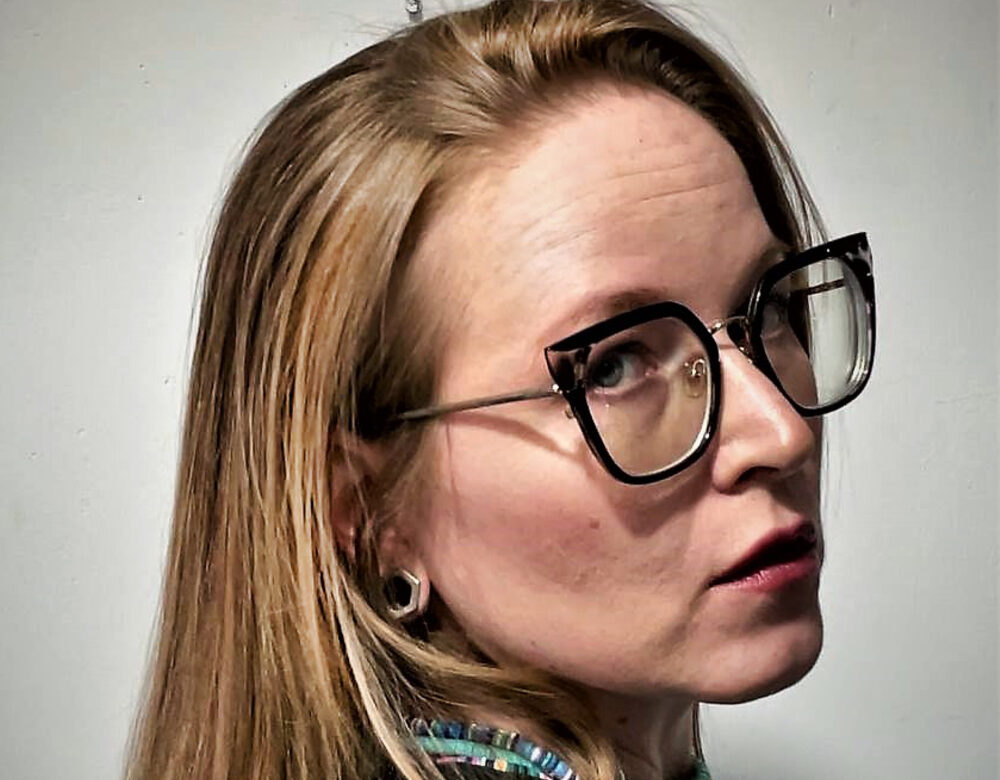Elena Mi
Describe your art in three words: Visual immersion into the unknown, the unsettling, and the mystical.
Your discipline: I create acrylic paintings with elements of airbrushing in my technique. I also work on commission, including wall murals, custom painting on cars, interior objects, clothing, and accessories.
Instagram
Your art explores the theme of imaginary, non-human civilizations and other worlds. Could you share more about how these themes first captivated you, and how they’ve evolved in your work over the years?
Since early childhood, I’ve felt a strong pull toward what lies beyond the visible world. Fantasy books, science fiction films, and theories about the existence of other life forms shaped my sense that the universe is far more complex and strange than it appears. Over time, this fascination evolved into a visual language. I stopped searching for “real” forms of the extraterrestrial and began creating my own civilizations, entities, and artifacts — drawn from dreams, from silence, from fragments of what defies rational explanation.
You mention that your works are inspired by dreams and visions of distant universes. Can you elaborate on how dreams influence the compositions of your paintings?
Dreams are a portal. They bring me images whose logic is alien to the waking mind: spatial paradoxes, beings without beginning or end, landscapes where gravity doesn’t apply. I try to preserve that fragile dream structure in my compositions — its unexplainable nature. My paintings are rarely fully planned in advance; more often, they evolve through association, like a dream itself, where one element echoes into another.
How do you balance the mystery of the cosmos and the themes of loneliness and detachment in your work? What emotions do you hope your viewers experience when encountering your art?
For me, space is not merely a physical realm, but a metaphor for inner emptiness, mystery, and isolation. My beings and landscapes are not lonely because they’ve been abandoned, but because they belong to a different logic of existence. I want the viewer to feel a strange calmness and a subtle unease — to sense being in a place where no one speaks a human language, and yet there is harmony and meaning. It is a touch of the unknown.
 Elena Mi | Dreamcatcher
Elena Mi | Dreamcatcher
You describe the worlds in your paintings as existing beyond time and space. Can you tell us how this concept impacts your creative process and the techniques you use to portray these expansive worlds?
When I create my worlds, I start from the idea that they don’t follow the laws of physics, perspective, or linear time. These are spaces beyond human logic — where everything can be different, yet still perceived by the viewer as “real.” To enhance this effect, I often strive for hyperrealism — making the alien feel tangible, almost photographically precise. Airbrushing helps me achieve this: it allows for smooth, even transitions, and creates the illusion of depth, air density, surface moisture — sensations the viewer can almost feel on their skin. The dark palette and soft, diffused glow play a crucial role — they evoke a sense of deep night, vacuum, and silence. Everything appears frozen, yet exists in a state of constant, slowed motion. These techniques help me blur the line between reality and imagination — making the unreal believable, and the dreamlike physically palpable.
As an artist who previously worked in a variety of fields, from PR to motorcycle painting, how have these diverse experiences influenced your artistic approach and subject matter?
To be honest, my current artistic work didn’t emerge because of my previous experiences, but rather in spite of them. I spent a long time searching for my place — trying myself in different fields. All that time, there was a lingering sense that I was heading in the wrong direction. Only when I allowed myself to paint what I truly see — worlds alien to our own, strange beings, unfamiliar structures — did I feel like I was finally returning to myself. But of course, those experiences didn’t vanish without a trace. Airbrushing, which I first encountered while painting motorcycles, became an important technical tool for working with texture and visual realism. And my background in PR — understanding marketing and organization — now helps me build a structure around my art: exhibitions, presentations, and meaningful dialogue with the audience.
What role does texture and color play in evoking the vastness and mystery of the universe in your paintings?
Color and texture are not just artistic tools for me — they are the foundation of the atmosphere in my work. I deliberately choose a dark, cool palette: shades of indigo, graphite, dull silver, deep blue, and black. These colors evoke space, emptiness, eternity. They don’t so much create an image as a sensation — one of unease and detachment, as if the viewer has found themselves alone in the universe, with no familiar points of reference. I want the darkness in my paintings not to be frightening, but meditative — like a silent vacuum in which you hear only yourself. The textures also contribute to this feeling. It’s all a way of bringing the viewer closer to a state of stillness, where they can sense the vastness and alien nature of the infinite.
 Elena Mi | Mountain lake
Elena Mi | Mountain lake
Your use of symbolism seems deeply rooted in the cosmic and otherworldly. Could you tell us more about the meanings behind some of the recurring motifs, such as the mysterious creatures and objects in your work?
I never set out to create a specific symbol — they emerge on their own. Spheres often appear in my paintings, not as geometric forms but as entities that carry emptiness and infinity within them. Their drifting through space creates a sense of weightlessness, surrealism, and detachment from the real world. Forms resembling nautilus shells or spirals arise as echoes of eternal structures — the golden ratio, Fibonacci numbers — but not as mathematical calculations; rather, as the natural breath of alien organic life. These elements serve as a reminder that even in the strangest worlds, there can exist an inner harmony beyond our comprehension. The beings in my paintings are neither protagonists nor mythological figures. They are more like emotions that have taken shape. They defy identification — and that’s precisely where their power lies. I want the viewer not to recognize, but to feel.


Leave a Reply